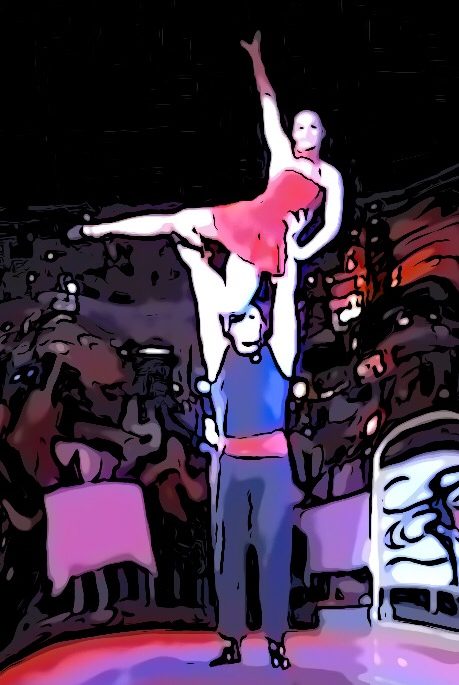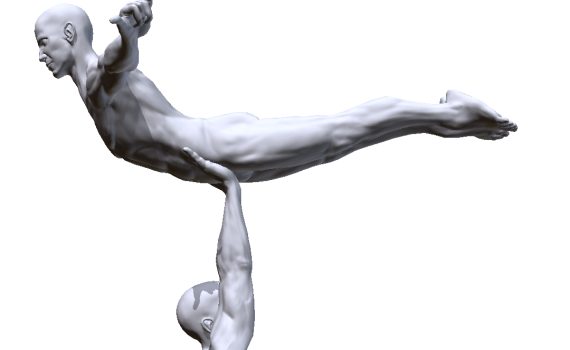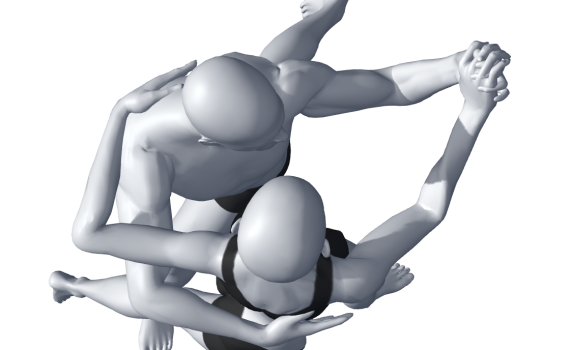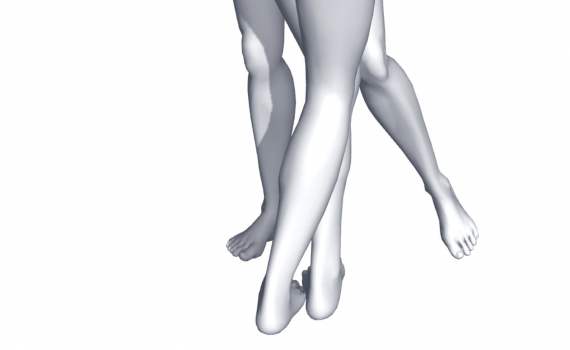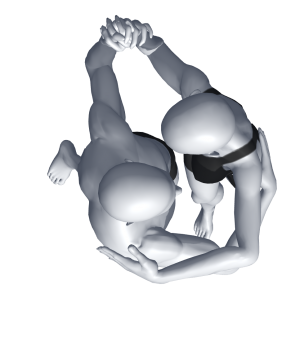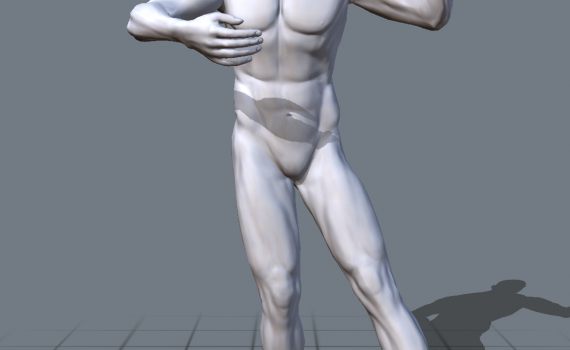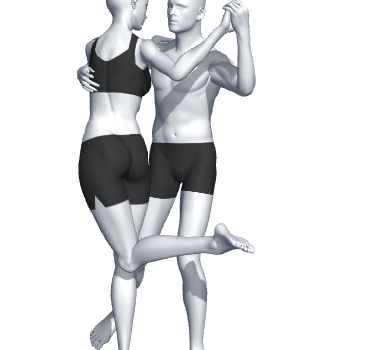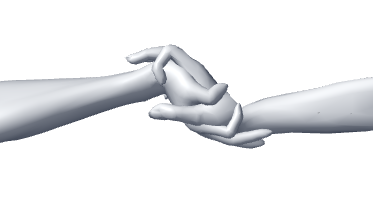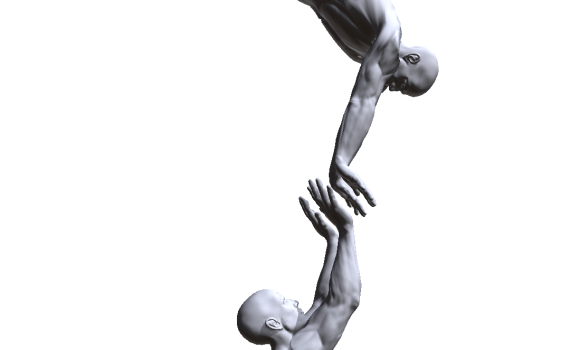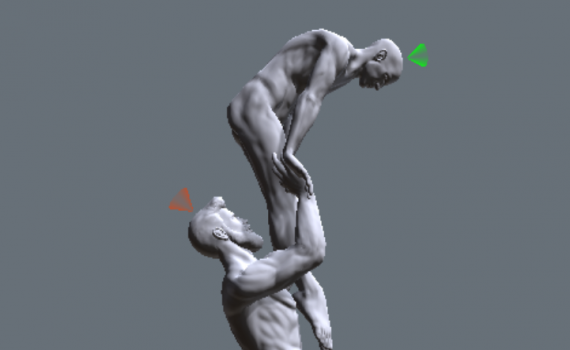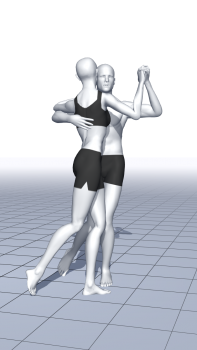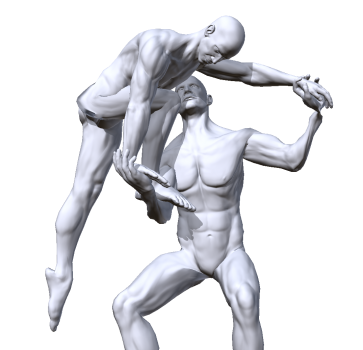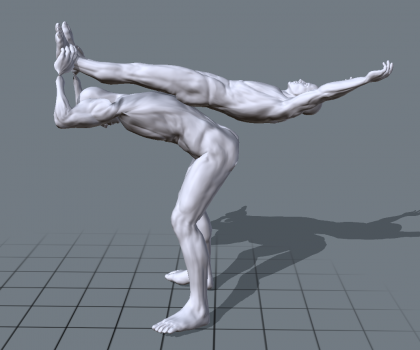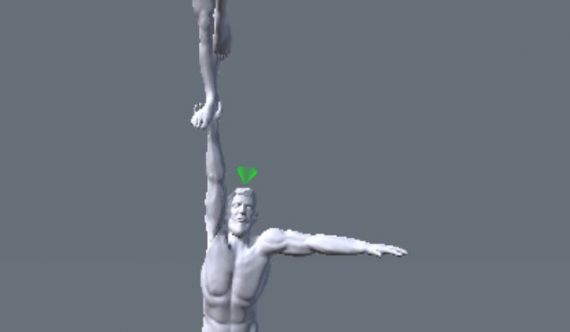The high belly flyer is one of the first figures of the standing base onto the straight arms. As soon as a beginner manages this trick as a base, he rises to the status of an advanced 😉 Although this trick should be feasible even with pure power, I’ve already seen body builders failing with a 60 kg flyer, though they lifted 120 kg while lying and still 80 kg while standing. So what’s so special about this trick? On the one hand, he became a cult in 1987 by Patrick Swayze in “Dirty Dancing”. At that time every young […]
Yearly archives: 2018
The Sacada (= taken out, show, …) arises when one partner crosses the direction of movement of the other between his feet. During the Sacada, the center of gravity of both partners move is contrarotating. The one partner attacks, while the other dodges. This results in very strong body counter movements (= dissociations), which give this figure its special character. The knees are keeping together, because otherwise very quickly the impression of a peeing dog arises! Sensationally danced Sacada combinations interpret the staccato of the music with a slightly aggressive dialogue between the partners. It creates the impression of a […]
The Enrosque (= screw) is a figure to be danced in the inside circle and thus only stationary. It begins with crossed and parallel feet (cruz) that remain crossed during the rotation. Many coaches also teach the variant with feet crossing or dissolving during the rotation. As always, it is of course a personal matter of taste and in this case not mine. For me, the particular charm of the Enrosque is the rubber band effect (similar to the propeller of a model airplane) that arises when the body counter movement (= dissociation) dissolves during the Enrosque. An open leg […]
The Giro (= rotation) builds up like a compass. One partner is the compass mount, rotating stationary in the inner circle, the other partner rotating dynamically like the compass pointer in the outer circle around it. In principle, both partners in the outer circle may also dance dynamically around the common center. However, for me, the special charm of the Giro gets lost a bid. To understand the difference between dynamic and stationary rotation, let me briefly talk about the technique of the Pivot … The Pivot is basically a stationary turn on the foot. If the weight remains exactly […]
The Lapiz (= pin) is a classic rond, with the peculiarity that the foot (like a compasses) keeps in contact with the ground while the knee always points forward. The Tanguer@ fondles the floor with the Lapiz. Depending on the dancers emotion, the heel, the flat foot or just the toes may be used. Whoever wants to exhaust all possibilities, should intensively deal with the Adornos (= ornaments). Movement: The Lapiz starts from the knee2knee position. Then the free leg is stretched and guided in a large semicircle around the body, and afterwards angled to end up again in the […]
The cause for a Boleo (= slingshot) is the Rebote (= rebound). The step approach will be stopped and there is a weight transfer to the previous foot. The Rebote is danced with a body counter movement (= dissociation) that starts in the shoulder and continues like a wave until the foot. The free foot moves on until the end in the original dance direction, taking off and giving the impression of a whip. In advance to the Boleo, the Ocho is danced forward or backward. After the forward ocho, the boleo will cross the legs forwards. The angular momentum […]
The Salida (= Start) is a step pattern (basic pattern) of the tango that can be adapted to any rhythm: Lady starts with left forwards, man with right backwards… one (small) step against the dance direction (2 lane) one step sideways to the middle (with change from 2 to 3 lane) a step outside of the partner in dance direction (3 lane with dissociation) a step in the dance direction (3 lane) close (with weight shift and change from 3 to 2 lane) → the lady crosses to precede (comparable to the left turned Viennese waltz) a step in the […]
In principle, I recommend the balancing on the palm! Watch your hand in the push-up position with straight arms. Try to keep your weight only on your fingers … It is possible, but unnecessarily difficult. And now watch the angle between forearm and back of the hand. Usually the possible range is between 90 ° – 270 ° DEG, but keeping a weight on the back of the hand is unnecessarily difficult too. I have met people who could move their wrist until the touch with the forearm on both sides. In the partner balance, only the range of 100 […]
The Courbet (Flac) is a trick from the category for experts. This trick starts for the flyer in the handstand and ends when standing in the hands. If the trick is caught on straight arms, it’s a trick for professionals, as you rarely see it in the circus. In principle, the Courbet is the second part of the flicflac, which is why this trick is more and more often called flac. Strictly speaking, the Courbet is only a section of the flac, namely the active leg pull just before standing. Unlike the flac, the flyer for the Courbet (in the partner […]
The Posechka is a trick from the category for experts. Where the term Posechka comes from is probably a myth. The best tip seems to be, that some Eastern European brought this trick to Germany about 30-40 years ago and called it “Posetschka”. Google only offers a Bulgarian translation, which tells us that Posechka means “sober”. Posetschka is not known by Google and Posedchka means saddle, which also does not make more sense!? In German, I prefer to use the term “reel-up”, which at least meaningful describes the type of movement to the handstand. Nevertheless, there are many acrobats who […]
The Ocho (→ 8) results from the correctly danced forward or backward step → the caminata. As a reminder, there are 2 knee-to-knee positions directly behind each other in both forward and backward motion. These short moments are not held and should not produce an extension of the knees. The heel of the standing leg remains on the ground. In order to allow the free leg to swing through under the center of gravity, while keeping the knees close to each other, a small pivot on the footpad of the standing leg is required. The torso turns in advance and […]
Pitching to handstand using the wheel turn is a trick from the category for experts. Off the ground, it’s one of the easiest possibilities to a handstand on straight arms, as the base easily controls the shearing forces of the flyer. Furthermore, the energy from the legs of the flyer (with maximum torque while stretching) helps to push the handstand comparatively effortlessly on the straight-arm. As pre-exercises I recommend: the wheel-turn to the handstand for the flyer on the floor with the belly to the wall. The start position is as close to the wall as possible with the left […]
The butler is a trick from the category for experts. With potential for long arms and thus even a trick for professionals … As pre-exercises I recommend: the base pulls up the flyer while doing the handstand on the floor (picture 1) and gets him back on his feet in front of him (pull over) the flyer jumps on the trampoline from the supine position back to standing, the lying base kicks the flyer lying backwards on the feet to the standing in the hands and the standing base pushes the standing flyer several times in a row on straight […]
Pitching is a trick for the good advanced, but can be increased to any difficulty as desired. As preparation I recommend: the flyer jumps up from the side (lying base) with a quarter turn to the one-legged standing onto the one-armed at straight arm, the flyer jumps up from the front (kneeling base) with a half turn to the one-legged standing onto the one-armed at the short arm and the flyer jumps up from the front (standing base) with a half turn to the standing on the hands with straight arms. This trick starts in the deep squat for the […]
The pitch to counter handstand is also for experts always a challenge… Starting position: The partners stand in front of each other and hold hands. The hands of the flyer are turned outwards, those of the base grip them from below, suitable for the planned final position, the counter-handstand. After the initial tempo, in which the base follows the flyer, the flyer jumps off active and slightly leaned forwards (picture 1). As soon as the contact point is under his center of gravity (picture 2), the flyer starts leaning even more forward (picture 3 = taking off pantyhose). High relieving: […]
